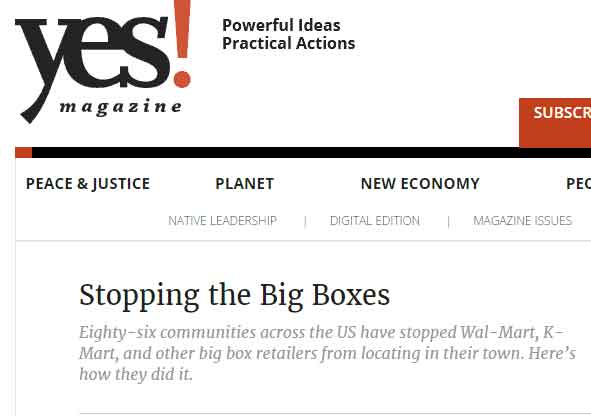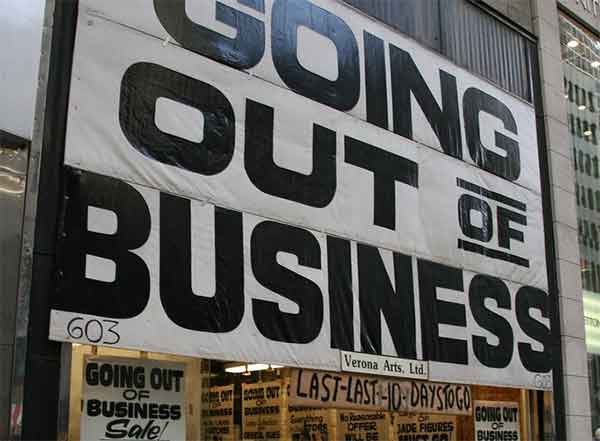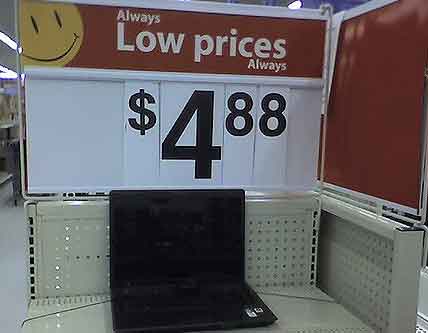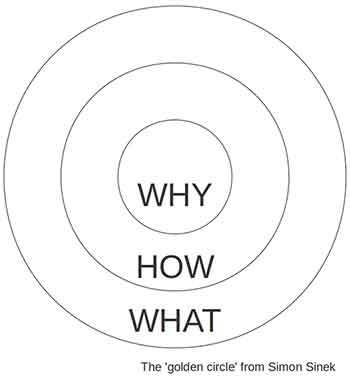A few years back I was serving on the board of directors of a local chamber of commerce.
During my tenure on the board, Walmart was attempting to build a new store about 5 miles down the road from the small village the chamber served.
I honestly couldn’t believe the level of freak-out that ensued, or the lengths that both individuals, and the chamber as a whole (on behalf of the members that would have been negatively affected), went to block the store from coming to the area (successfully, I might add).

At the time, this small village still had a variety store that had been around for decades.
It was even colloquially referred to by long-time locals as “the five-and-dime.”
The amount of fear that a new Walmart would force local retailers out of business made no sense to me.
Why? Because, it’s 2016. If Walmart can put you out of business in the year 2016, you’re in the wrong business!
See also: Why We Don't Price Match in a Price-Competitive Industry
So, what ended up happening? Walmart never did come to town, and the five-and-dime still went out of business.

I’ll use Walmart somewhat metaphorically in the remainder of this article for simplicity, but when I refer to Walmart, I don’t only mean Walmart.
I’m talking about big box stores, e-commerce giants like Amazon, and/or whatever your own particular “Walmart” might be.
For example, the majority of Searles Graphics’ revenue still comes from commercial printing services, where our “Walmart” is Vistaprint.
Vistaprint is honestly a fantastic place to order small quantities of standard print products like business cards or postcards.
As of this writing, 500 basic business cards costs about $30.
For a client that sees those products as commodities, uses very small quantities, is ok with a canned design template, and cares primarily about price, that’s a great deal; I probably can’t even turn my press on for that price.
I’ve said it before and I’ll say it again, you can’t “out-Walmart” Walmart.

Using my own business as an example, this means we need to find a way to differentiate ourselves from the Vistaprint’s of the world, and we do so in a number of ways.
Searles Graphics may have started as a commercial printer, but we’re now a full-service marketing and creative agency.
That means our clients value the effectiveness of the marketing materials they put in the world.
They value cohesiveness and originality in their brands, they care about tracking the effectiveness of a marketing piece, and look to us for advice and counsel on how to maximize their precious marketing dollars instead of just throwing darts at a wall.
That’s what keeps us from competing against commodity brokers like Vistaprint.
No matter what you do, there’s nothing wrong with changing your business, products, and services to remain relevant.
In fact, it’s a requirement if you want to stay in business for any significant period of time.
The fastest way to go out of business is to believe your product or service IS your business.
Doesn’t make sense?
Think about it this way: If we defined Searles Graphics as a commercial printing business (as many printers do), we’d be on our way to becoming obsolete.
That’s not to say that commercial printing is dead (I believe the exact opposite, in fact), but the fact is that there are so many ways to get your message out these days that none of them enjoy the same market share that print held for so long.
By defining ourselves instead as a company that exists to help entrepreneurs, businesses, and organizations achieve their goals through effective marketing and communication, we’re able to transition our core competencies into new products and services without hesitation.
But enough about us, what should you do if you’re that local five-and-dime staring down the barrel of a brand-new Walmart?
The question you need to answer is, “Why does your store exist?”

You probably started your business to provide a variety of useful everyday and household items local people wanted and couldn’t easily acquire elsewhere.
So instead of carrying Hallmark greeting cards, generic stationery, pens and pencils, toilet paper, and paper towels, maybe it’s time to transition into organic, all-natural products from local producers and custom stationery featuring the work of local photographers.
None of which can be found on the shelves at Walmart; all of which will be promoted by the individuals to whom you’re giving an outlet for their work.
You could organize a weekly farmers market with one of your local CSA’s every Saturday morning offering fresh, organic produce that was harvested just yesterday.

You could work with local artisans and craftsmen to carry their products on consignment, costing you nothing but some shelf-space up-front.
The five-and-dime was once the hub of your community, it still could be, you just have to figure out how.
This strategy isn’t new or novel.
There are some amazing, thriving downtown communities in this country that are succeeding because business owners and entrepreneurs have already figured out how to run small retail operations profitably, even with a Walmart down the road.
In my area alone, there are high-end bicycle shops that compete with the giant sporting goods stores of the world (and win) by providing expert advice and guidance, high-quality repair services, and a greater selection than can be found at Dick’s.
I see olive oil stores, cheese shops, natural and organic food stores, wine bars, and craft beer bars and supply stores popping up everywhere.

The most successful of these ventures also find creative ways to co-market themselves.
This might be a local wine bar pairing up with a cheese shop to offer a wine and cheese pairing night, or a local running store getting together with the bike shop down the street to work with triathletes.
This doesn’t only apply to retail businesses either.
As another example from our business, we offer web design and development services in an era where DIY web design services like Wordpress, Squarespace, Wix, and GoDaddy run rampant.
But someone who rather pay $20 / month to spend their valuable time learning web design and digital marketing instead of selling their own product or service or managing their business would have been a terrible client for us in the first place.

That person will likely never value the services that we offer, and that’s ok!
[Additional Reading: Stop Worrying About Cost and Start Focusing on Value]
We differentiate ourselves from those services by bringing expertise you can’t learn in a week (or a month, or a year for that matter).
In the long run, choosing one of those alternatives will cost most of our potential clients much more in lost time and lost revenue than the added dollars they’ll spend up-front with us.
That’s how we stay in business in the face of so many Walmarts.
You’re not alone in feeling pressure from low-cost, high-volume providers that appeal to a specific market.
For example, tax preparers everywhere understand what it’s like to compete against the TurboTax’s of the world.
And while that software works great for individuals with extraordinarily simple returns, there are huge volumes of people that pay more than they should every year because they don’t have a good tax accountant.

Spending $300 to save $1,000 is an incredible investment, it’s just your job to illustrate that to your prospects (and then deliver on that promise).
There’s always going to be another Walmart, no matter what industry you’re in.
Every product eventually becomes commoditized. It’s the businesses that can continue to innovate and lead (or even create) markets that last.
It doesn’t matter if you run a small, local retail shop, or if you’re one of the large steel mills that slowly (and voluntarily) ceded market share to cutting edge mini-mills in the late 20th century, stagnation means death in any industry.
So stop worrying so much about what your competitors are doing and start finding ways to put yourself out of business!
If you can regularly put yourself out of business, you’ll always be one step ahead, capturing the remaining value of your current products and service while you lead the charge and ride the next wave to the top.
Not sure how to make those changes in your business? Shoot me an email with the challenges you currently face and I’ll take a look!

